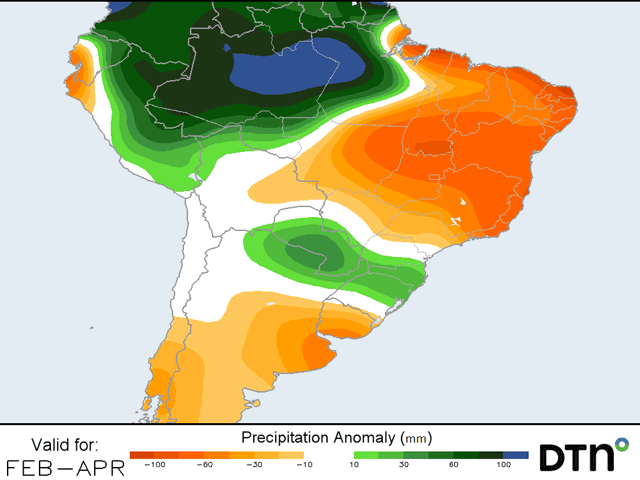South America Calling
Early Safrinha Season Outlook in Brazil
We all know the main season soybeans got off to a delayed start in Brazil, about two weeks in most cases. This pushes all operations backwards by at least those two weeks. Add in continued rain showers over central and southern Brazil during the last two weeks as soybean harvest has started, and the delays continue.
Pushing safrinha, or second-season, corn planting further into the future under already tight windows paints a picture of concern. Soil moisture has been increasing during the last two weeks as showers have been very consistent. But rainfall amounts have still been below normal across Mato Grosso and the adjoining states in Brazil, the largest producers of safrinha corn. This leaves soil and subsoil moisture suboptimal as planting for corn begins to increase during the next week or two.
P[L1] D[0x0] M[300x250] OOP[F] ADUNIT[] T[]
Showers are more likely to be the popup variety in Mato Grosso during the next seven to 10 days, allowing some breaks to get planting done. The attention really should be on the precipitation outlook; a shortened season will mean that all precipitation will be important and critical.
The forecast for most of February is not optimistic in this regard. The DTN forecast and extended versions of the American and European models agree that at least the first two to three weeks of February will have lower-than-normal rainfall amounts, though Feb. 5-9 could have rather decent amounts across the area. Scattered showers will likely be around through this stretch, but they may not be as heavy or widespread as we typically see for the month. This could lead to drier stretches and corn may have to rely on lower-than-normal soil moisture to germinate carry out the early growth.
This is abnormal for a long stretch during a La Nina pattern. Typically, rainfall is near normal over this section of Brazil. Models start to pick back up on this La Nina tendency for near normal precipitation at the end of February and into early March. Models are even suggesting that rainfall could be above normal, including for southern Brazil as well. The showers could be rather timely if soil moisture was starting to run out on the crop.
The DTN forecast concurs with this sentiment and has near-normal precipitation for March. And the pattern is expected to revert back to what we typically see in a La Nina for April and May: near normal across central Brazil and below normal for southern Brazil. A pattern like this would be good for the major growing areas in central Brazil, but southern Brazil could see much harsher conditions as crops are going through reproduction and fill.
So, to summarize, February could be sketchy for safrinha corn planting as showers are too abundant over the south and likely not enough across the north. Rainfall looks to be sufficient across all of Brazil for March as crops go through the vegetative stages. But rainfall returns to the La Nina pattern of normal in central Brazil and below normal in southern Brazil for April and May. This leads to a normal outlook for central Brazil, but a reduced outlook for southern Brazil.
John Baranick can be reached at john.baranick@dtn.com
(c) Copyright 2021 DTN, LLC. All rights reserved.





Comments
To comment, please Log In or Join our Community .